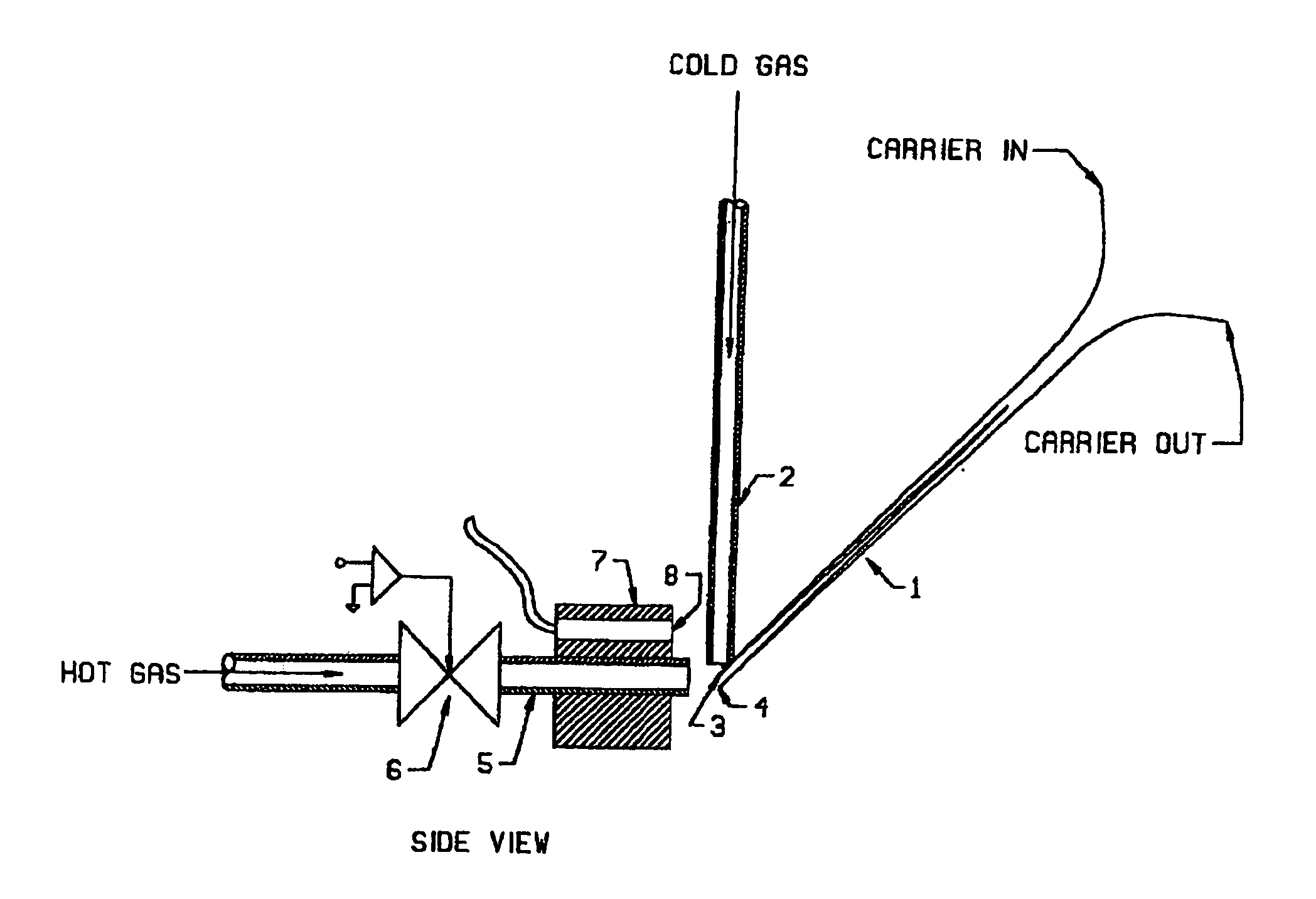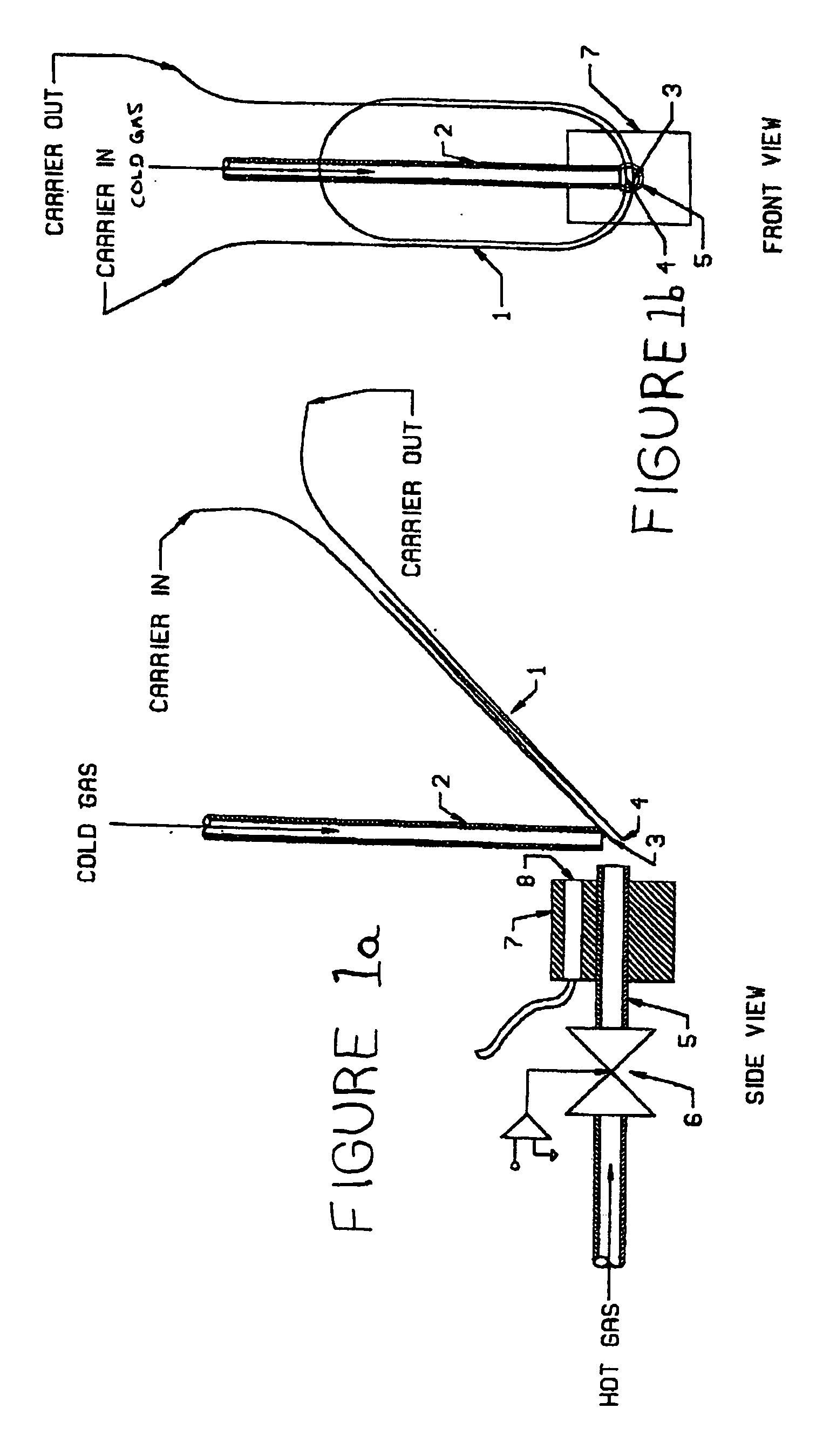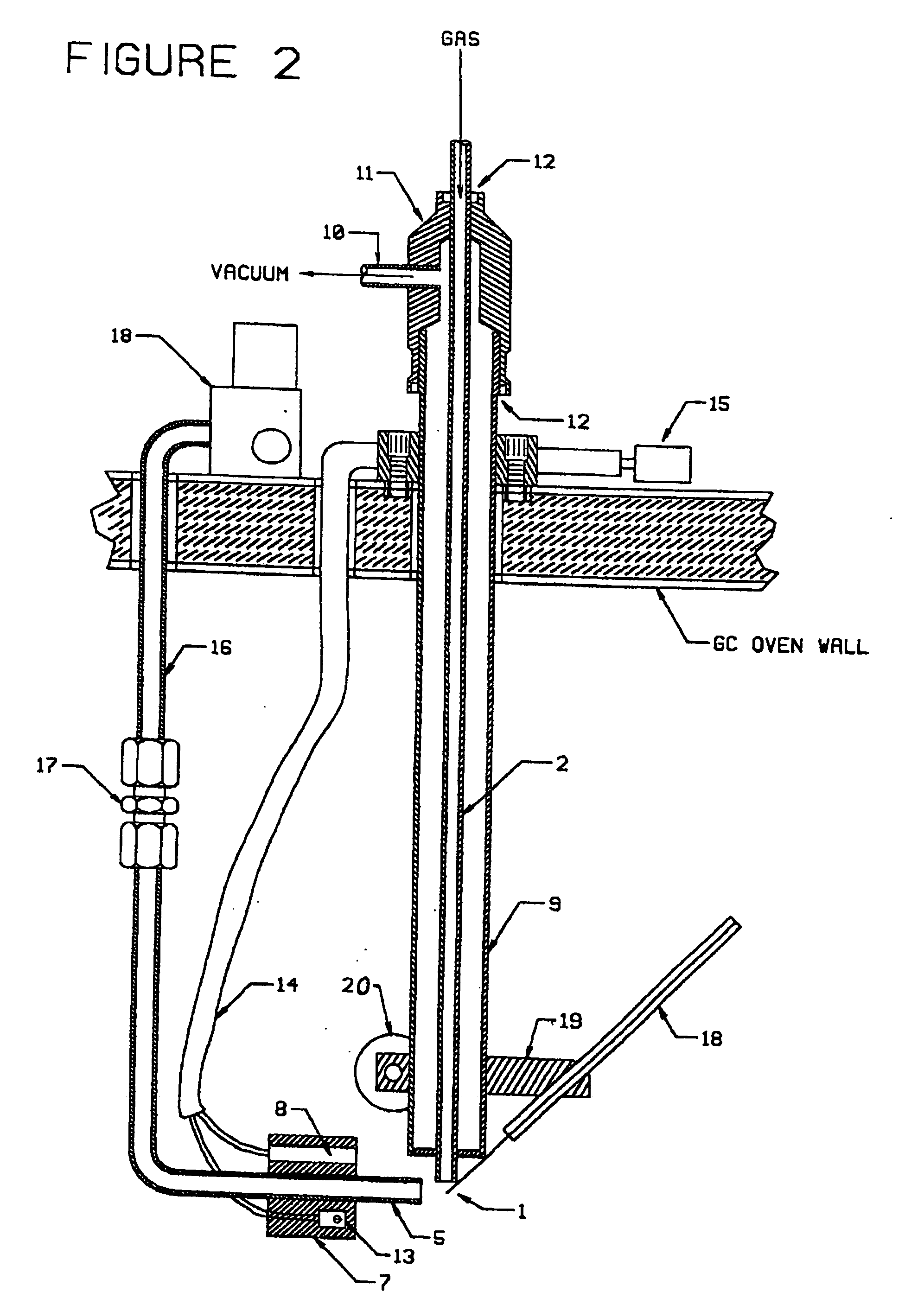Method and apparatus for measuring velocity of chromatagraphic pulse
a chromatographic pulse and velocity measurement technology, applied in the field of gas chromatography, can solve the problems of single-stage modulators, ohmic coatings to burn out, and suffer certain limitations, and achieve the effects of high quality, low cost, and convenient us
- Summary
- Abstract
- Description
- Claims
- Application Information
AI Technical Summary
Benefits of technology
Problems solved by technology
Method used
Image
Examples
Embodiment Construction
[0042] The present invention can be further described in terms of the following methods and apparatus:
[0043] A method, herein referred to as method “A,” comprises a method of thermal modulation for generating chemical pulses in a fluid stream flowing through a modulator tube, said method comprising the steps of: [0044] a. providing a modulator tube comprising an inlet, a first portion in communication with said inlet, a second portion in communication with said first portion, and an outlet portion in communication with said second portion; [0045] b. creating a fluid stream in a direction through the modulator tube to produce a carrier fluid stream; [0046] c. introducing a sample into the carrier fluid stream, said sample comprising one or more chemical substances; [0047] d. manipulating the temperature of the first portion to cause at least a portion of the sample to be retained therein; [0048] e. manipulating the temperature of the second portion such that at least a portion of th...
PUM
| Property | Measurement | Unit |
|---|---|---|
| temperatures | aaaaa | aaaaa |
| temperature | aaaaa | aaaaa |
| temperatures | aaaaa | aaaaa |
Abstract
Description
Claims
Application Information
 Login to View More
Login to View More - R&D
- Intellectual Property
- Life Sciences
- Materials
- Tech Scout
- Unparalleled Data Quality
- Higher Quality Content
- 60% Fewer Hallucinations
Browse by: Latest US Patents, China's latest patents, Technical Efficacy Thesaurus, Application Domain, Technology Topic, Popular Technical Reports.
© 2025 PatSnap. All rights reserved.Legal|Privacy policy|Modern Slavery Act Transparency Statement|Sitemap|About US| Contact US: help@patsnap.com



